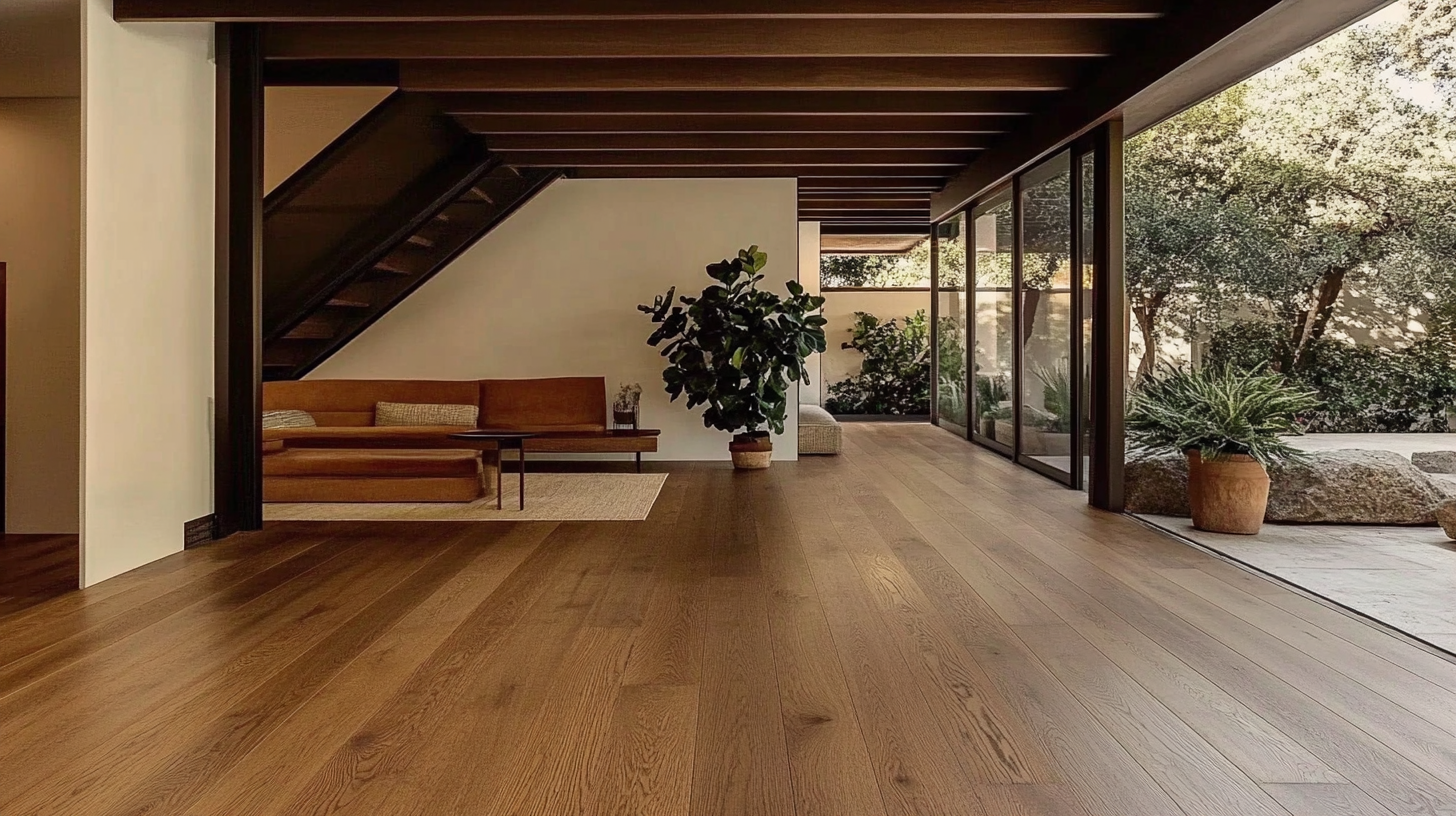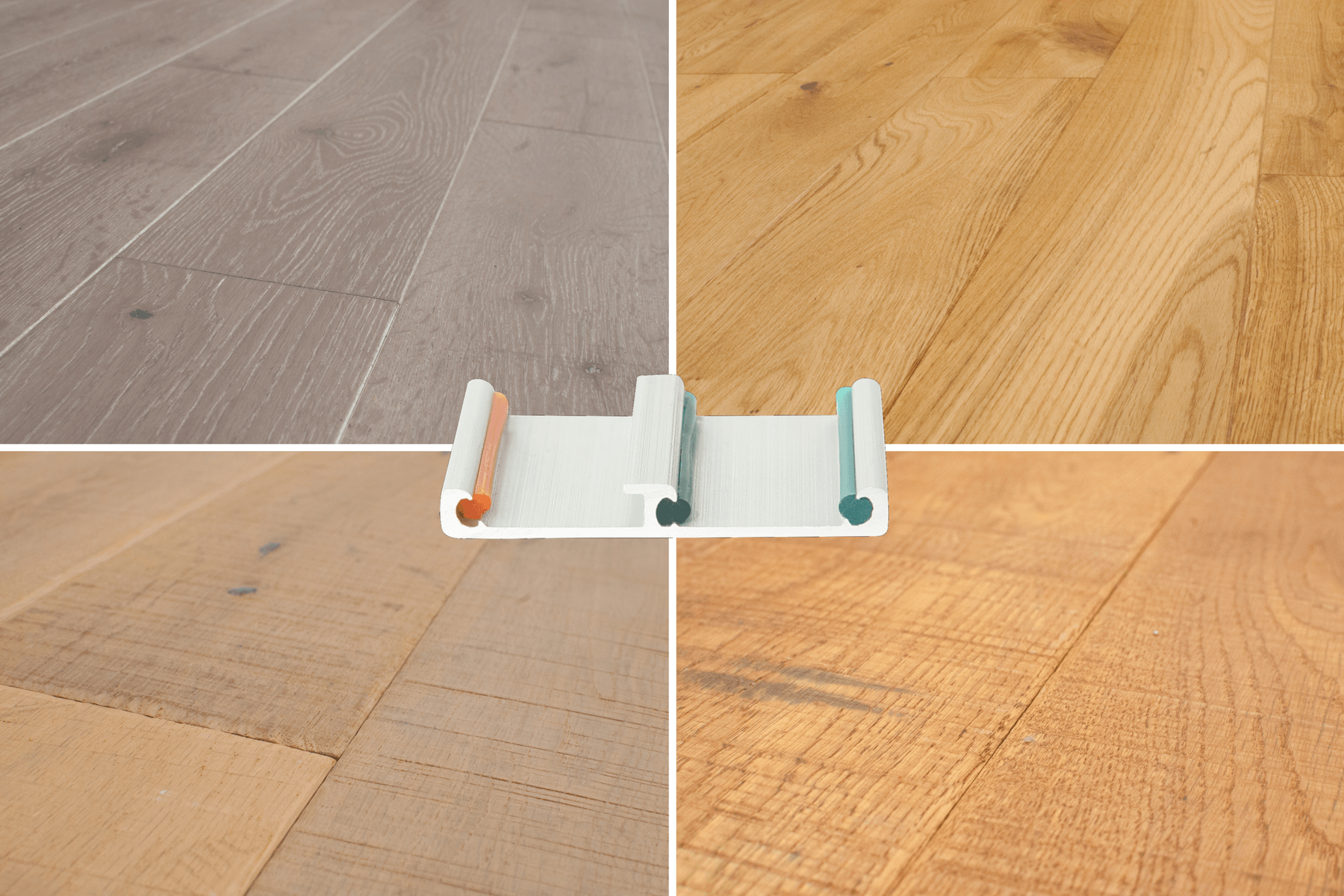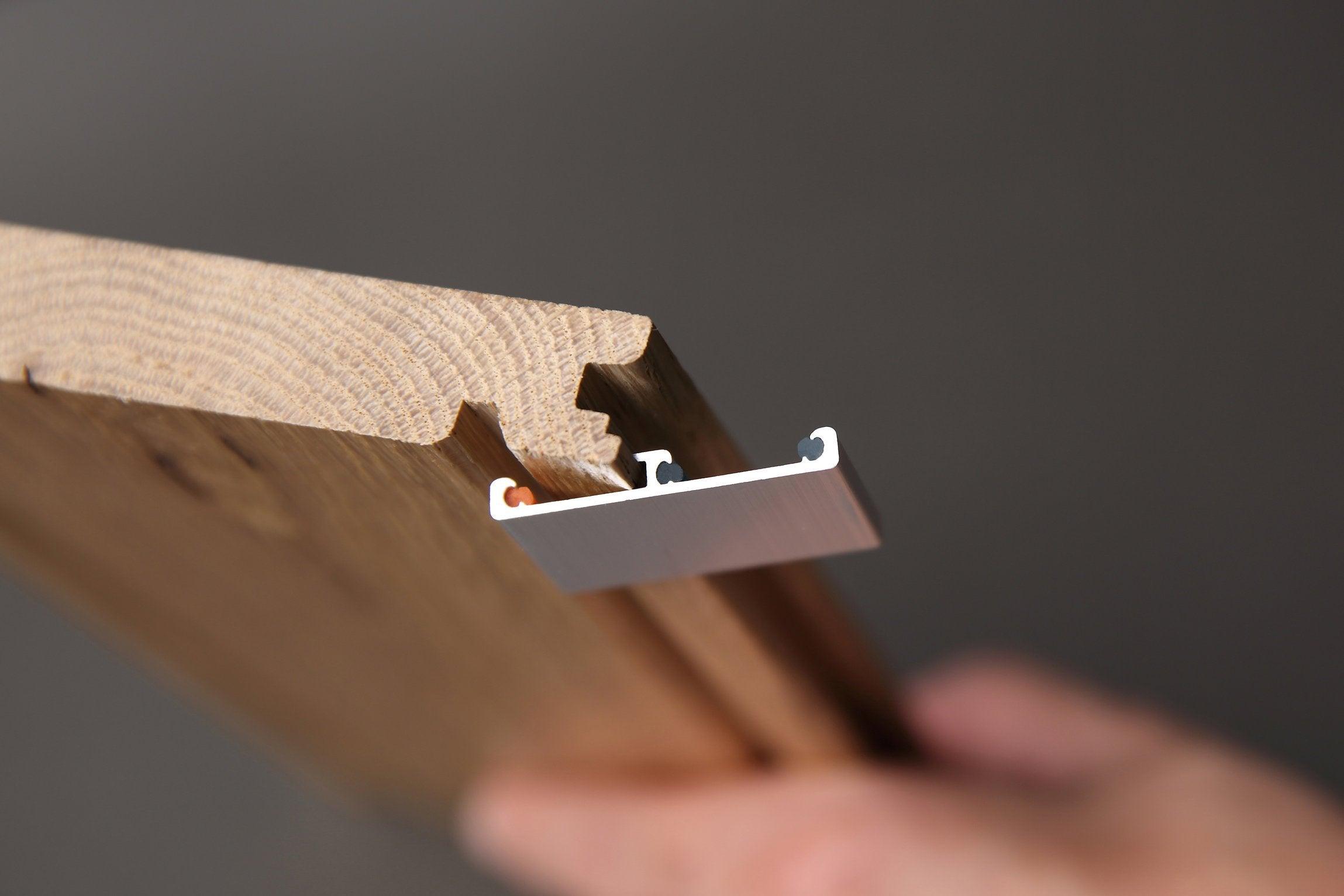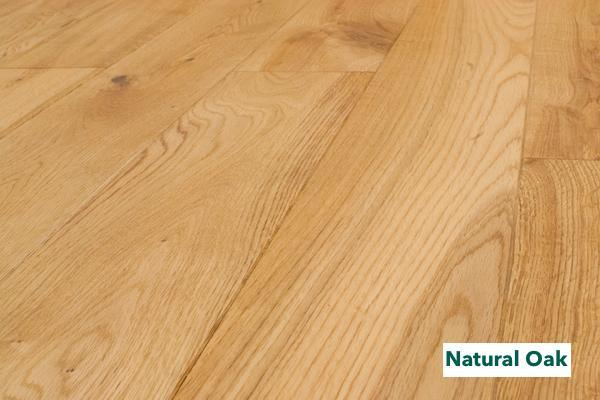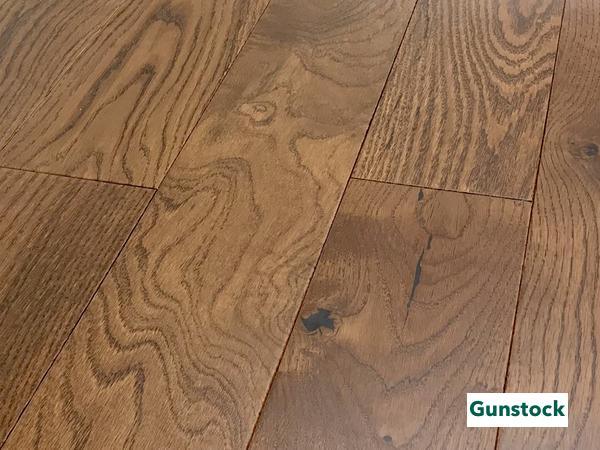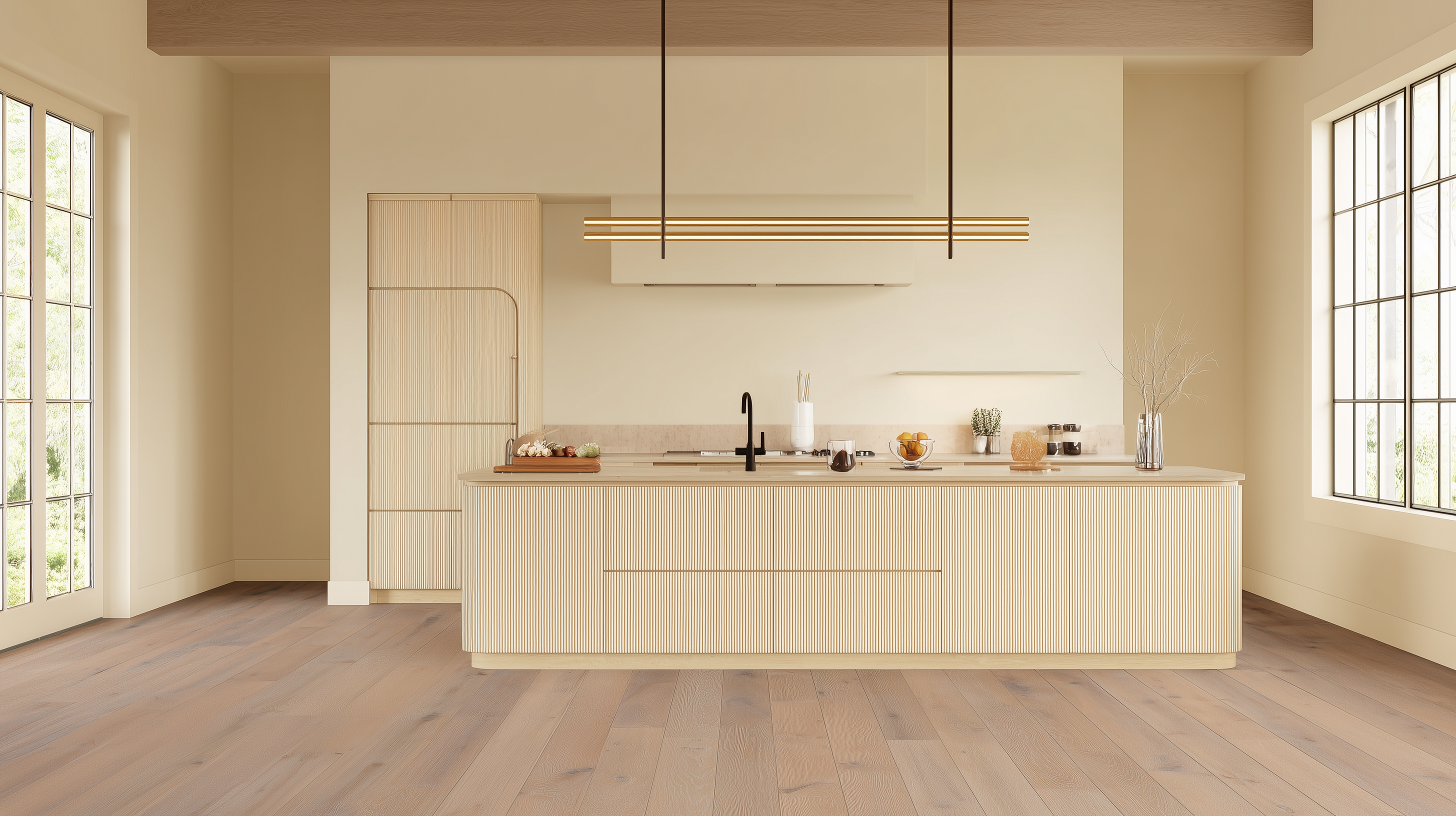A great floor finish shouldn’t smother wood—it should let it breathe. That’s the appeal of a tung oil floor finish: it penetrates the grain, deepens tone, repels water, and cures into a flexible, matte layer that moves with the wood. Used for centuries to seal boats, tung oil still protects what matters, now in homes where warmth and longevity beat high-gloss shine.
In this guide, you’ll learn the differences between pure and polymerized tung oil, how to prep correctly, the right way to apply thin, even coats, and how to maintain that soft, natural sheen for years. If you want durability without the plastic look, this is your finish.
What Sets Tung Oil Apart
Pressed from the nut of the tung tree, pure tung oil is then heat-treated in oxygen-free chambers—an alchemical process that transforms it into a resilient, deeply penetrating oil. Mixed with a citrus or mineral solvent at a 1:1 ratio, it slips into the grain, curing over days into a flexible, matte finish that moves with the wood.
Unlike polyurethane, tung oil doesn’t sit on top. It bonds with the fibres. It becomes part of the floor. The result is a finish that reveals rather than hides—softening light, warming tone, and forgiving the gentle marks of time.
It’s ideal for yellow pine, oak, walnut, and nearly any wood species. And it’s easy to maintain. You won’t need to sand, scrape, or refinish the entire floor. Just clean with mild soap, let it dry, and reapply more tung oil as needed. The wood receives it like an old friend.
If you want your floors to look better, last longer, and age with grace, this is the finish to trust.
Next, we’ll show you exactly how to prep your floor and apply tung oil the right way.

Understanding Your Options: Pure, Polymerized, and Blended
Not every tung oil floor finish is the same. Here’s what you need to know:
-
Pure tung oil is just that—no additives, no solvents, and a very slow cure time. Best for small projects and furniture, not ideal for flooring unless you thin it yourself.
-
Tung oil (as labeled on many commercial products) is often polymerized and thinned with mineral spirits or paint thinner at a 1:1 ratio. It penetrates more easily and cures faster.
-
Polymerized tung oil floor finish is heat-treated during processing. This process involves heating the oil to a high temperature in an oxygen free environment, which increases its viscosity and creates a harder film as it cures. This changes the oil structure, making it harder and more durable—but also denser, so it needs to be thinned for application.
For wood floors, skip straight pure tung oil. It won’t penetrate deep enough and will take too long to cure. Instead, use a properly thinned mix—or go with a ready-made blend like Dark Half, which combines dark tung oil and citrus solvent for easier application and a deeper tone.
Next, let’s break down how to prep your floor and apply the first coat for the best results.
Choosing the Right Finish for Your Wood Floors
Not all finishes are created equal. If you want a surface that’s tough, low-maintenance, and actually improves the look of your wood floors, start with the right product—and the right plan.
The type of wood, the amount of foot traffic, and the look you’re after all matter. But if your goal is a natural, non-toxic finish that protects while highlighting the grain, pure tung oil is hard to beat. Additionally, tung oil is environmentally friendly, making it a safe choice for homes with children and pets.
For high-traffic areas, skip the straight oil and go with a polymerized tung oil. It’s been heat-treated for extra durability and cures into a harder, more resilient surface. Want a smoother application and faster drying time? Thin your oil with a citrus solvent. It helps the oil penetrate deeper into the wood and leaves you with a cleaner, more even coat.
Whether you’re working with yellow pine, hardwood, or another surface, the right mix will make all the difference.
Preparing Your Floor
The final result depends on how well you prep. Don’t rush it.
Start by giving your floors a thorough cleaning—sweep, vacuum, and wipe down with dish soap and water to remove any dirt or residue. For new hardwood floors, sand them smooth and wipe away the dust to ensure proper absorption of the oil. If the wood is already bare, apply a light first coat of tung oil and wipe off the excess with a lint-free cloth.
Working with previously finished wood? Test a small section first with a natural bristle brush to make sure the oil adheres properly.
Always work in a well-ventilated room. Keep windows open and air flowing. While tung oil is low in VOCs, proper ventilation helps the curing process and keeps the space safe.
The better your prep, the stronger the bond—and the longer your finish will last.
Applying the Finish
This is where the magic happens.
Start by applying a thin coat of your tung oil blend using a paint roller or a bristle brush. Don’t flood the surface—more oil isn’t better. Work in small sections and wipe off the excess with a clean t-shirt. You want the oil to absorb, not sit on top.
Pine floors and other porous woods may need multiple coats. Apply one coat at a time, let it dry overnight, and check the surface before applying the next. Between coats, gently wipe down the floor with a dry mop or lint-free cloth. Avoid any harsh cleaners like Murphy’s Oil Soap, as they can strip the oil and leave dull smears—stick to mild solutions if needed.
Each coat builds protection, enhances colour, and deepens the natural grain. Walking on the freshly finished floor with bare feet enhances the tactile feel and comfort. But don’t rush it. The secret to a clean, even matte finish is patience: thin layers, proper drying time, and consistent application.
Do it right, and you’ll have a floor with tung oil that’s not only beautiful—it’s built to last.

What Does Tung Oil Finish Look Like?
A tung oil finish brings out the best in your wood floors without the plastic shine of synthetic coatings. It has a light honey-blonde tone that deepens the natural colour of the wood, adding warmth without yellowing. The result is a smooth, low-sheen surface—typically a matte finish, though a slight satin effect is possible with multiple coats. With proper application, the surface stays glossy for an extended period, indicating proper saturation and protection.
Unlike poly urethane, tung oil doesn’t sit on top of the wood. It penetrates deeply, filling the open grain and bonding with the fibres. The finish doesn’t build up or feel slick—it enhances, rather than hides, the character of your hardwood or yellow pine floors.
Because every floor and stain reacts differently, it’s important to test a small area first. That way, you’ll know exactly how the tone and finish will look once cured.
Tung oil gives a clean, natural look. No shine. No film. Just the wood—better.
Coming up: seven key tips to help you get the most out of your tung oil application.
7 Common Questions About Applying a Tung Oil Finish
Tung oil isn’t just for wood floors. It’s also used to protect brick, concrete, stone, and even cast iron accents. It repels water, resists alcohol and oil, and adds long-lasting protection to any natural surface.
But when it comes to hardwood floors, there’s a right way to use it.
Use tung oil only on unfinished wood—finished or sealed surfaces won’t allow it to penetrate. Apply a thin coat with a cloth, foam roller, or brush—just like you would with a stain. Applying pure tung oil without a thinner may require more elbow grease, but it can achieve a good finish. Let it absorb for about an hour, then wipe off any excess, ensuring proper wiping to prevent stickiness. Plan for several coats, with one hour of drying time between each, to ensure optimal saturation and protection. Buff lightly between layers using a soft abrasive pad to keep the finish smooth and even.
Pro Tip: If you’re starting with pure tung oil, thin the first coat using a solvent like mineral spirits or citrus oil for better absorption and faster drying. Products like Dark Half (a blend of dark tung oil and citrus solvent) make this process even easier.
Always wipe off excess oil with a lint-free cloth like a cotton t-shirt, ensuring the surface is properly wiped and clean.
Here are answers to the most common questions about applying and maintaining a tung oil floor finish:
1. How Do You Darken a Tung Oil Finish?
Darkening tung oil takes precision. Mixing in dyes can be tricky—especially over large areas like floors.
If you want to colour the finish, use oil-soluble aniline dye crystals dissolved in citrus solvent or odorless mineral spirits. Avoid oil-based stains—they block absorption and leave a sticky mess.
The safest option? Stain the wood first with a water-based stain, let it dry fully, then apply the tung oil over top.
2. How Long Does a Tung Oil Finish Last?
Done right, tung oil can last for years. It doesn’t evaporate or peel—it bonds with the wood.
Expect to re-oil high-traffic floors every 2–3 years. You won’t need to sand. Just clean the surface and apply a fresh thin coat. In most cases, you can walk on the floor in socks the next day.
3. How Many Coats Should You Apply?
It depends on the wood. Some floors absorb more than others.
Apply a thin coat, wait 45–60 minutes, and see if the surface looks dry. If it does, apply another. Most floors need 2–3 coats, especially in high-wear areas. Always wipe off excess oil with a lint-free cloth like a cotton t-shirt.
Avoid overapplying. DIYer Matt Yates learned the hard way—after flooding part of a 2,000 sq. ft. condo with too much oil, it was still tacky eight months later. His fix? A very thin coat, applied with a rag. No build-up. No mess.
4. How Do You Clean a Tung Oil Floor Finish?
Keep it simple.
-
Vacuum or dry mop regularly.
-
Mix 1 cup white vinegar with 1 gallon of water.
-
Dampen a microfiber pad, wring it out, and mop.
Avoid soap-based products like Murphy’s Oil Soap—they strip the finish and leave dull smears. For tough marks, use a bit of WD-40 on a cloth. For stubborn dirt, swap vinegar for ammonia.
5. How Do You Polish a Tung Oil Finish?
You don’t polish it. You recoat it.
For small areas, apply a new coat with a clean rag. For large rooms, use a floor mop with a pad lightly soaked in more tung oil. Let it sit for an hour, then wipe off the excess. Wait 24 hours before light use, and keep shoes off the surface for at least a month to avoid permanent marks.
6. How Do You Remove Tung Oil from Wood?
There are two options: solvents or sanding.
To remove with solvents, apply turpentine or paint thinner to a small test spot. If the oil softens without damaging the wood, scrape it away with steel wool or a paint scraper.
The other option is to sand the surface down to bare wood, just like any other floor refinish. (Check out our guide: How to Use a Wood Floor Sander Machine for tips.)
7. How Long Does Tung Oil Take to Cure?
With a proper 50/50 mix of oil and solvent, the surface dries to the touch in 1–2 days—but full curing takes 15 to 30 days.
You can walk on the floor the next day (in socks), but avoid shoes until it’s fully cured. Heat, airflow, and humidity all affect cure time. A short-lived glossy look right after application means your wood is fully saturated—that’s a good sign.
Safety Tips When Using Tung Oil
Tung oil is safe and non-toxic once dry—but you need to take care during application. As it cures, tung oil generates heat. Rags soaked in oil can spontaneously combust if left in a pile.
Never toss used rags in the trash or leave them bunched up indoors. Instead, hand-wash them in dish soap and water, then lay them flat or hang them outside to dry for at least 24 hours.
Take proper precautions, and you’ll avoid any safety risks.
Comparison at a Glance
Finishing wood floors can be done with many other products, each offering different benefits and drawbacks. The comparison table below highlights how pure tung oil stacks up against polyurethane, Danish oil, and hardwax oil in terms of ingredients, safety, VOCs (Volatile Organic Compounds), appearance, repair, maintenance, application, water resistance, feel, durability, and curing time. This will help you understand which finish fits best with your needs for a hardwood floor. When finishing floors, it is important to consider the type of finish that best suits your needs.

(White oak floor finished with pure tung oil. Tung oil penetrates the wood, yielding a natural satin look that enhances grain without forming a plastic film on the surface)
|
Feature |
Tung Oil (Pure) |
Polyurethane |
Danish Oil |
Hardwax Oil |
|
Natural Ingredients / Toxicity |
100% natural, food-safe, no additives (when pure). Often thinned with citrus or mineral spirits. |
Synthetic resin. High fumes during application. |
Blend of oils and varnish with solvents. Semi-natural. |
Natural oils and waxes. Low or no VOC. Mild odour. |
|
VOC Levels |
Zero VOC (pure). Blended versions may contain VOCs. |
High VOC (oil-based), lower VOC (water-based). |
Moderate to high VOC – requires good ventilation. |
Very low VOC – many are 0–50 g/L. |
|
Gloss Level |
Matte to satin. Natural sheen that enhances grain. |
Available in matte to high-gloss finishes. |
Satin to semi-gloss. More shine than tung oil. |
Matte to low-satin. Soft, velvety appearance. |
|
Spot Repair Ease |
Excellent – easy to reapply and blends well. |
Poor – scratches are hard to repair invisibly. |
Excellent – spot repairs blend easily. |
Good – spot repairs usually blend well. |
|
Maintenance Required |
Needs re-oiling every 1–3 years. Easy upkeep. |
Low – long-lasting but needs full refinish over time. |
Re-oil or wax every 1–2 years. No sanding needed. |
Refresher coat every 2–4 years. Easy to maintain. |
|
Application Difficulty |
Moderate – wipe-on, wipe-off. Multiple coats. Long cure. |
Challenging – requires even coating, sanding, good ventilation. |
Easy – wipe on, wet-on-wet method possible. |
Easy – apply, buff, and wipe. Often 1-2 coats. |
|
Water Resistance |
High – repels water but not waterproof. Wipe spills quickly. |
Excellent – waterproof topcoat seals surface. |
Moderate – decent moisture resistance. Wax helps. |
High – resists spills and stains. Microporous. |
|
Surface Feel |
Natural wood feel – soft and organic. |
Plastic-like film – slick and smooth. |
Natural, soft sheen – grain remains visible. |
Smooth, waxed feel – warm and velvety. |
|
Durability |
Moderate – holds up with care, needs refreshing. |
High – excellent wear resistance and lifespan. |
Fair – handles light wear, but not heavy use. |
Moderate to high – very durable with upkeep. |
|
Dry/Cure Time |
Slow – several days to apply, 15–30 days full cure. |
Moderate – dries in 6–24 hrs, cures in 1–4 weeks. |
Fast – usable in ~48 hrs, full cure in a week. |
Fast – dry in 8–24 hrs, full cure ~5–7 days. |
|
Notable Product Examples |
Waterlox, Real Milk Paint Co. Pure Tung Oil |
Minwax, Bona Traffic HD |
Watco, Rustins Danish Oil |
Osmo Polyx, Rubio Monocoat Oil Plus 2C |
Each of these finishes can produce a beautiful result, but the best choice depends on your priorities and whether you prefer oiled floors or other types of finishes. If you want a natural, low-VOC finish that’s easy to repair and has a warm, organic feel, tung oil or Danish oil are attractive options (with tung oil being all-natural and Danish oil offering a bit more sheen).
For maximum durability and water-proofing with minimal upkeep, polyurethane is the go-to, although it leaves a more artificial look and feel. Tung oil is particularly effective on porous surfaces, ensuring optimal saturation and protection.
Staining the wood before applying tung oil can enhance the overall appearance and durability of the finish. Hardwax oils are a modern compromise – they imbue wood floors with a natural matte elegance and are eco-friendly and easy to maintain, while still providing better protection than traditional oils. By comparing these facets – from gloss level to cure time – you can select a wood floor finish that best matches your aesthetic preferences and practical needs.

Final Thought: Let the Wood Be Wood
When it comes to finishing your wood floors, few options match the lasting beauty, durability, and simplicity of pure tung oil. It’s natural. It’s proven. And when applied correctly, it transforms ordinary wood into a warm, water-resistant surface that gets better with age, not worse.
Ready to skip the mess and hassle? Explore Easiklip’s prefinished solid hardwood flooring—the natural beauty of wood with the convenience of a click-together install and a factory-cured finish that’s ready to walk on right away.

